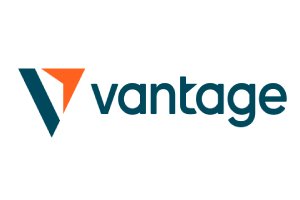Crypto security has always been about private keys. Lose your key, lose your coins. The Threshold Signature Scheme (TSS) fixes this single point of failure by splitting one private key across multiple parties. No single person controls the entire key anymore.
This approach matters for exchanges, institutional investors, and anyone managing significant crypto assets. A hacker can’t steal funds by compromising just one device or person. They need to attack multiple independent parties at once.
How Threshold Signature Scheme Actually Works
TSS breaks down a private key into mathematical pieces called shares. Think of it like a vault that needs multiple keys to open. In a 2-of-3 setup, three people each hold one key share. Any two of them can work together to sign transactions.
The signing process happens through multi-party computation. Each participant uses their share to create a partial signature. These partial signatures combine into one complete signature.
This differs from traditional multi-signature wallets in key ways. Multi-sig creates multiple separate signatures on the blockchain. But TSS creates one signature that looks identical to a single-key signature. This provides better privacy and lower transaction fees.
The mathematical foundation relies on secret sharing schemes and elliptic curve cryptography. Each share alone reveals nothing about the original private key. Only when enough shares combine do they recreate the signing capability.
Key Benefits for Crypto Users and Businesses
TSS eliminates the biggest risk in crypto: single points of failure. Traditional wallets put all trust in one private key. If someone steals or loses that key, the funds disappear forever. TSS spreads this risk across multiple parties.
Key benefits of this security measure include:
- Lower transaction costs: TSS signatures look like regular signatures to the blockchain. Multi-sig transactions require more data and cost more in fees. TSS transactions use the same amount of blockchain space as single-key transactions.
- Enhanced privacy protection: Multi-sig wallets reveal their security setup on the blockchain. Anyone can see how many signatures a transaction required. TSS transactions provide no such information and look identical to regular transactions.
- Increased operational flexibility: The threshold can change without generating new wallet addresses. A 2-of-3 scheme can become 3-of-5 without moving funds. This helps businesses adapt their security policies over time.
- Improved recovery options: If one party loses their key share, the others can still sign transactions. New shares can be generated for the lost party without compromising security. This prevents the permanent loss scenarios common with single-key wallets.
- Better fault tolerance: The system continues working even when some participants are offline or compromised. This creates more reliable access to funds compared to traditional single-key systems.
Real-World Applications and Use Cases of Threshold Signature Scheme
TSS technology serves various sectors and use cases across the crypto ecosystem. Here’s how different organizations implement these security improvements:
- Exchange security implementations: Exchanges use TSS to secure customer funds across multiple geographic locations. Instead of one hot wallet with a single key, they create distributed signing across different servers and jurisdictions.
- Corporate treasury management: Companies implement TSS for their Bitcoin holdings. A company might require three executives to approve large transactions. The CFO, CEO, and treasurer each hold key shares.
- Family inheritance planning: Parents can set up a 2-of-3 scheme with themselves and a trusted advisor. If something happens to one parent, the other can still access funds with the advisor’s help.
- DeFi protocol governance: Protocols integrate TSS for governance and treasury management. Protocol upgrades require multiple key holders to sign. This prevents single points of control and improves decentralization.
- Lightning Network improvements: TSS allows for more flexible channel management with backup signers. Traditional Lightning channels require both parties to stay online. TSS implementations provide better uptime and reliability.
Challenges and Limitations to Consider
Despite its advantages, TSS faces several obstacles that organizations must address before implementation:
- Technical implementation complexity: The cryptographic protocols require careful implementation. Small mistakes can create security vulnerabilities that attackers can exploit. Many developers lack experience with these advanced cryptographic techniques.
- Communication coordination overhead: All participating parties must coordinate during the signing process. This requires reliable communication channels and can slow down transaction processing. Network issues can prevent timely transaction signing.
- Advanced key management requirements: Traditional backup methods don’t work with TSS. Each party needs secure backup procedures for their key shares. Lost shares can reduce the threshold flexibility over time and create operational risks.
- Limited standardization efforts: Different TSS implementations may not work together. This creates compatibility issues when organizations want to change TSS providers. Industry standards will take time to mature and stabilize across the ecosystem.
- Regulatory uncertainty concerns: Financial regulators may not understand how TSS differs from traditional custody arrangements. This creates compliance challenges for institutions considering TSS implementation in various jurisdictions.
Final Word
TSS represents a major step forward in crypto security. It solves the single point of failure problem while maintaining blockchain compatibility.
As the technology matures, expect wider adoption across exchanges, institutions, and advanced users who prioritize security over simplicity.
Interested In Trading The Market With A Trustworthy Partner? Try Eightcap Today.
- Broker
- Min Deposit
- Score
- Visit Broker
- Award-winning Cryptocurrency trading platform
- $100 minimum deposit,
- FCA & Cysec regulated
- 20% welcome bonus of upto $10,000
- Minimum deposit $100
- Verify your account before the bonus is credited
- Fund Moneta Markets account with a minimum of $250
- Opt in using the form to claim your 50% deposit bonus
Learn to Trade
Never Miss A Trade Again

Signal Notification
Real-time signal notifications whenever a signal is opened, closes or Updated

Get Alerts
Immediate alerts to your email and mobile phone.

Entry Price Levels
Entry price level for every signal Just choose one of our Top Brokers in the list above to get all this free.



